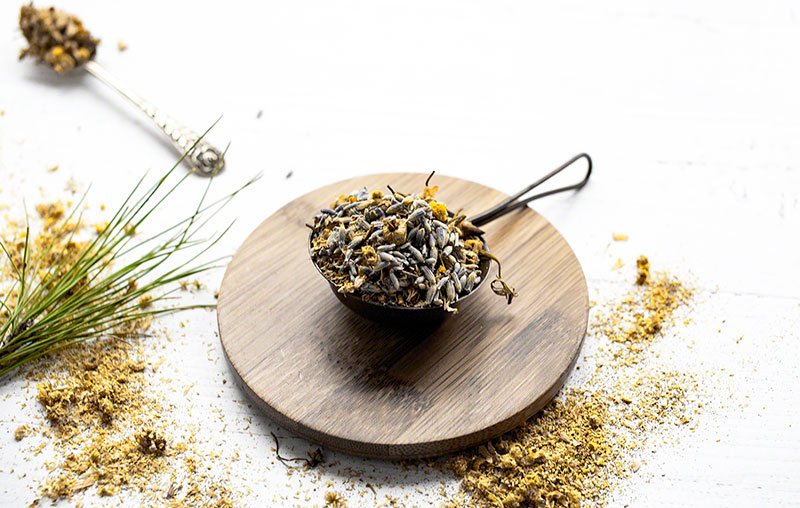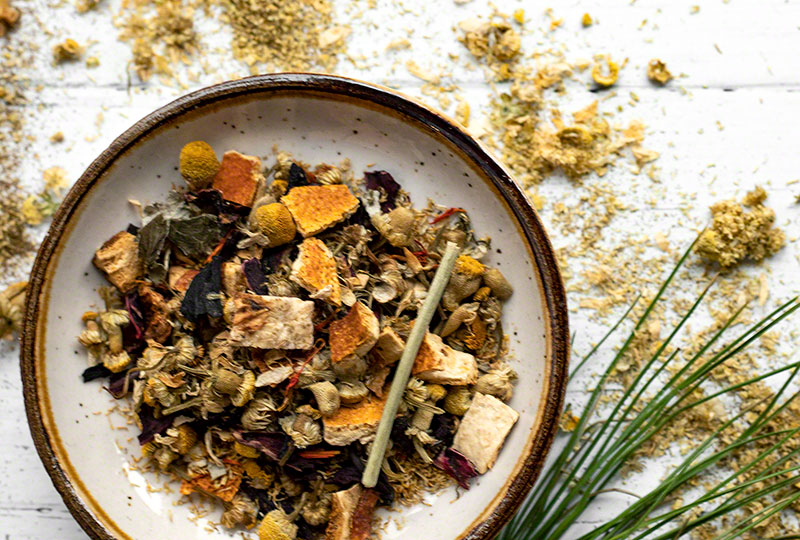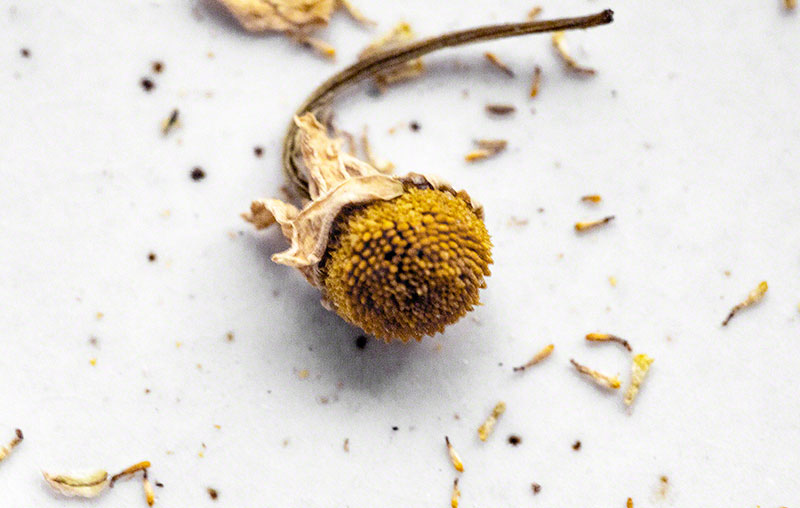Best Chamomile Tea for Improved Health and Sleep in 2020
Chamomile is one of the oldest natural remedies for treating many infections and calming both mind and the body. First Chamomile plants were cultivated almost 10000 years ago and even Hippocrates, the Greek physician, studied chamomile for its medicinal properties[1]. The popularity of the chamomile herbal tea survived the test of time, and it’s still one of the popular home remedies for all sort of health problems.
Although a cup of chamomile tea always tastes delicious, there is more than just one type. Out of Roman, German, English, Hungarian, Indian or Egyptian chamomile tea – which one is the best for health and sleep? Find out in our guide through the world of delicious and soothing chamomile tea.
How to choose the best chamomile tea
There are two main chamomile plants – Matricaria chamomilla and Chamaemelum nobile. Those two types are better known as German and Roman chamomile. And then, there are wild and garden grown plants, and different cultivars, each having a slightly different chemical composition. They all have similar benefits and similar taste. All other types, such as Hungarian, Egyptian and Indian are likely belong to these two groups, except Wild and Moroccan chamomile.
Pretty little flowers of German chamomile belong to a daisy family[2].
If your main goal is relaxation and better sleet, both types may help. But, if you are looking for relaxing muscles too, German chamomile or true chamomile may be a better option. If you want a sweet tea, opt for the German one.
Blends containing both Chamomile and some other calming and soothing herbs may be the best choice for sleeping problems. Lavender, hops, peppermint and bitter orange may enhance the benefits of pure Chamomile flowers and offer relaxation for a better sleep.

Chamomile Lavender tea blend
What is chamomile tea good for?
Chamomile is mostly used for its delicious flavor and calming properties. Although both types of chamomile can provide necessary relaxation after a long day, and are often used for its sedative, anxiolytic and antispasmodic properties, and for treating inflammation[3]. Chamomile herbal tea is not only good for drinking, making an infusion and using it as a steam bath may do wonders for skin and respiratory system. It may help for many problems in all age groups–from soothing teething pain in children, to crushing bladder rocks and curing eye dieseses[4][5].
Chamomile can even be used as a mosquito repellent[6] and the sssential oils are often used in aromatherapy.
Chamomile tea benefits
German chamomile is often used both as a mild sedative and for relaxing muscles[7]. Its primary use is for physical relaxation, although it may offer comfort to the mind as well. On the other hand, Roman chamomile is mostly used for problems related to gastrointestinal tract such as reliving flatulence, help easing nausea, soothing muscles and as a sedative[8]. They both have antiseptic, antifungal, antibacterial and antitumor properties[9].
Both chamomile teas have anti oxidative properties. Chamazulene, a chemical compound in these two plants may help fight free radicals. It has anti inflammatory and anti oxidative activity. Studies showed that German chamomile contains more chamazulene than the Roman chamomile, possibly making it a slightly better choice. Besides, it contains alpha-bisabolol, another compound that may help with inflammation[10]. However, another study showed the opposite – that volatile oils from the Roman chamomile may have a higher anti oxidative activity[11].
Sounds confusing? Chamomile is no different that real tea. The final health benefits of chamomile, flavor and color will depend not only on the cultivar, but on the terroir, harvesting and processing too.
Science says that drinking chamomile tea may help lower blood sugar and fatty acids in people with type 2 diabetes[12]. Chamomile may be one of the best teas for treating depression after childbirth and improving sleep in general[13]. One study showed that drinking two cups of chamomile tea before bed may promote deep sleep and even help with nightmares[14]. 2 cups may also be enough and beneficial for helping treat the common cold[15].
In aromatherapy, Roman chamomile is more often used for treating anxiety and sleep disorders. But for making a cup of tea, German chamomile is more common.
Other types of chamomile tea, such as Moroccan chamomile (Ormenis multicaulis) don’t belong to a chamomile group. They share the similar appearance, but they have not been researched enough to confirm potential benefits[16] and match than with the benefits of the real Chamomile.
Does chamomile have caffeine?
Unless mixed with white, green, oolong, black or dark loose leaf teas or herbs that contain caffeine, chamomile tea is caffeine free. This makes it suitable for all age groups, and any time of the day or night. Although rare, it’s possible to be allergic to this herbal tea. Chamomile may interact with some medicine, so consult your doctor, especially if you are taking blood thinners. Concentrated chamomile tea may induce vomiting, so pay attention to brew it properly and stop using immediately if you see any side-effects[17].

Berry Chamomile Tea
How to brew chamomile tea
Brewing a cup of comforting chamomile tea is very easy. Remember to use freshly boiled, spring water. Try not to boil the same water twice. Instead, boil just enough water for one cup or one pot, depending how much tea you want to make. Preheating a teapot is unnecessary, but advisable. With preheating your teapot you will get to enjoy the best flavor of the dried Chamomile flower.
For the best benefits, choosing the highest quality loose leaf tea is very important. Measure one heaped teaspoon of tea leaves per cup of water and steep for 5-10 minutes. If you are using a regular mug, cover it with a small saucer. Strain and add honey if needed. Chamomile tastes great with a bit of lemon too.
If you want to experiment a bit more, chamomile makes a great cup of latte too. You can cold brew it or make a chamomile iced tea, and blend it with other ingredients and real teas. A cup of green tea blended with chamomile may be a great way relax after a long day, get just a bit of caffeine for the uplifted afternoon, and still enjoy the calming properties of L-theanine in green tea and apigenin, a sedative substance from chamomile[18].
Disclaimer: This article is for informational purposes only. It’s not intended to replace medical advice, diagnosis or treatment. Every person is different and may react to different herbs and teas differently. Never use teas or herbs to treat serious medical conditions on your own. Always seek professional medical advice before choosing home remedies.
References
[1] http://abc.herbalgram.org/site/DocServer/CRCPRESSChamomile-Section_1.5978-1-4665-7759-6.pdf?docID=6362
[2] https://www.ncbi.nlm.nih.gov/pmc/articles/PMC2995283/
[3] https://www.japsonline.com/admin/php/uploads/288_pdf.pdf
[4] https://www.japsonline.com/admin/php/uploads/288_pdf.pdf
[5] https://www.ncbi.nlm.nih.gov/pmc/articles/PMC5074766/
[6] http://abc.herbalgram.org/site/DocServer/CRCPRESSChamomile-Section_1.5978-1-4665-7759-6.pdf?docID=6362
[7] http://pennstatehershey.adam.com/content.aspx?productid=107&pid=33&gid=000232
[8] https://www.japsonline.com/admin/php/uploads/288_pdf.pdf
[9] https://www.sciencedirect.com/science/article/pii/B012227055X005927
[10] https://www.ncbi.nlm.nih.gov/pmc/articles/PMC5074766/
[11] https://www.japsonline.com/admin/php/uploads/288_pdf.pdf
[12] https://www.ncbi.nlm.nih.gov/pmc/articles/PMC5074766/
[13] https://www.ncbi.nlm.nih.gov/pmc/articles/PMC5074766/
[14] https://www.japsonline.com/admin/php/uploads/288_pdf.pdf
[15] https://www.sciencedirect.com/science/article/pii/B9780323358682000189
[16] https://www.sciencedirect.com/science/article/pii/B9780443072369500096
[17] https://www.sciencedirect.com/topics/medicine-and-dentistry/chamazulene
[18] https://www.japsonline.com/admin/php/uploads/288_pdf.pdf




